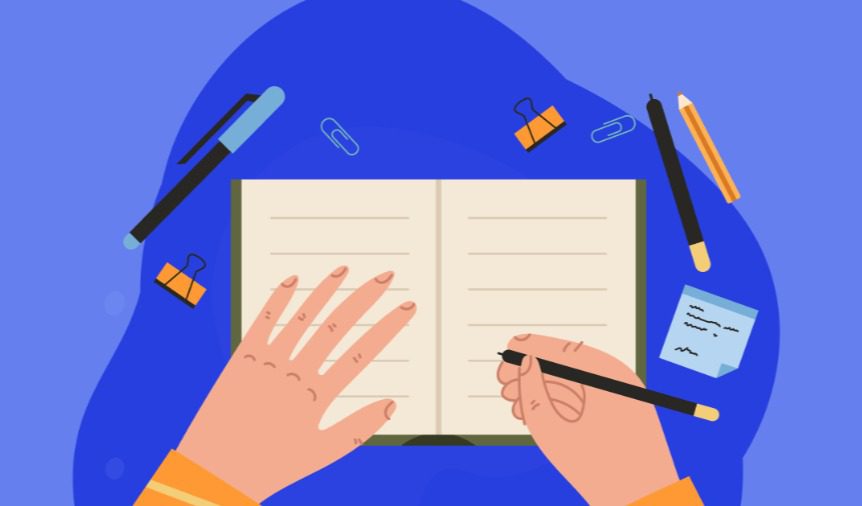The opening lines of an essay are crucial. Known as the “hook”, the introduction needs to grab the reader’s attention and draw them into reading further. A dull, flat opening risks losing a reader before they’ve even begun. The option to write my essay may be considered to ensure an engaging introduction aligned with academic standards.Below are tips and examples for writing a strong hook to engage your audience.
Why the Introduction Matters
The hook is your chance to make a first impression. Readers decide very quickly if they will continue reading something, often within the first 1-2 sentences. The remainder of the essay needs to sustain the interest sparked by the hook.
A weak introduction lacks energy or fails to connect with the reader. For example, beginning an essay with a dictionary definition fails to intrigue. While definitions have their place, leading with one tends to be dry and clinical. The reader may assume the entire essay will be uninspired.
On the other hand, a compelling hook encourages the reader to keep reading. A strong opening line grabs attention by creating mystery, tension, or surprise. It presents an intriguing statement readers want to better understand. This motivates them to continue reading the analysis that follows.
Types of Effective Hooks
Many techniques exist for crafting an engaging introduction. Varying the structure and language keeps the reader interested. Below are some hook options to consider:
Rhetorical Question
Rhetorical questions encourage the reader to think about a topic from a new perspective. Instead of dry statements, they offer an interesting conjecture. For example:
“What if the most influential person in your life was a stranger you met only once?”
This immediately causes the reader to reflect on the power random interactions can have. It piques curiosity about how this theme will be developed in the essay.
Relevant Quotation
Crafting an effective hook for an essay necessitates employing attention-grabbing strategies, such as anecdotes, statistics, or compelling questions, to engage readers; for additional support and expertise, consulting the best law essay writing services in the UK may offer guidance in creating an impactful introduction adhering to legal academic conventions. Finding a pertinent quote from an expert or famous person can provide inspiration. For example:
“Everything you can imagine is real.” – Pablo Picasso
This line from a revered artist prompts readers to reflect on the validity of the statement. It lays groundwork to explore the imagination and its correlation to reality. Quotes are a natural lead-in to analyzing concepts further.
Revealing Statistic
Hard numbers and statistics grab attention because they offer definitive facts. Readers want to know more about a surprising figure presented to them. For example:
“New Yorkers eat approximately 35 acres worth of pizza per day.”
This intriguing statistic likely sparks curiosity about NYC’s pizza consumption compared to other cities. It’s a compelling anchor that leads to exploring broader issues around dietary habits.
Anecdote/Scene
Vividly painting a micro-scene or anecdote lends a human element readers can relate to. For example:
“The churning in his stomach became impossible to ignore as the rollercoaster roared up the rickety track.”
This snippet of an amusement park ride immediately allows readers to envision and feel the scenario. Describing small, specific moments draws in the audience by helping them personally connect.
Description
Careful details can create a visual that effortlessly transports readers into an essay. For example:
“The first peach of summer – fuzzy skin still damp with morning dew, sweet juice dripping down chin and elbows.”
These concrete images and textures enable readers to bite into the peach themselves. Thorough descriptions employ the five senses to make a concept tangible.
Play on Words
Clever wordplay engages readers in an unexpected way. For example:
“The report was about trees. In other words, it had its roots in botany.”
A play on words like this amuses the reader and indicates creativity to come. Surprising double meanings invite the audience to read in anticipation of further wit.
Counterintuitive Idea
Presenting a counterintuitive concept surprises the reader and gets them thinking. For example:
“The homeless man felt sorry for the wealthy woman.”
This challenges preconceived notions and opens up complexity. Readers become compelled to follow along as counterintuitive ideas are explored.
Definition
Unlike starting outright with a dictionary definition, this technique creatively establishes meaning. For example:
“Serenity is not freedom from the storm, but peace amid the storm.”
This prompts the reader to contemplate the concept being defined in a new light. It lays groundwork for how “serenity” will be examined throughout the essay.
Generalization
This technique makes a broad statement about a topic, often using “we” to include the reader. For example:
“When we feel defeated, the smallest act of kindness can restore our faith in humanity.”
By making a general observation, readers nod along in agreement. This validated feeling then leads into the specific focus of the essay.
Famous Person Monologue
Crafting a fictional inner monologue from a well-known figure allows creativestorytelling. For example:
“If he could speak, George Washington’s first words would be…’What have they done to my beautiful wig?!'”
This quirky perspective surprises the reader and establishes an amusing tone. Dramatizing a famous persona intrigues people to find out where it will lead.
Dialogue
Eavesdropping on a conversation in progress piques reader interest. For example:
“I’m not going to apologize for having ambition,” she said, staring directly across the dinner table.
The reader wonders who is speaking and why the statement is so significant. This line suggests tension and disagreement to come. Dialogue pulls the audience into the scene unfolding.
Simile/Metaphor
Comparisons using “like” or “as” help readers visualize concepts through relateable associations. For example:
“The ice cream melted as quickly as Usain Bolt finishes a 100-meter race.”
Linking ideas to common references we understand makes them more accessible. Readers grasp the concept through the lens of a shared cultural experience.
What Makes a Good Hook?
Whether using rhetorical questions, statistics, or imagery, an effective hook exhibits some key qualities:
- Sparks curiosity: Makes the reader eager to understand more fully what is being conveyed or described.
- Establishes tone: The style and language sets up the feel of the essay, whether sincere, humorous, dramatic, etc.
- Hints at the focus: Foreshadows the underlying themes and ideas to be discussed without giving everything away.
- Relatable: Draws in readers by connecting with shared experiences and knowledge.
- Active voice: Use of vivid verbs in the present tense energizes the language.
- Conciseness: Gets directly to the point without meandering. Length should be 1-2 sentences at most.
The hook is not meant to be a thesis statement or sum up the entire issue. Its role is to captivate interest and motivate reading the analysis to follow. While not formulaic, incorporating vivid details and avoiding passive language are key.
Examples of Good Hooks
Here are some examples of effective opening lines:
- “Diagnosed with terminal cancer at age three, little Emily refused to die without finishing her cone of strawberry ice cream.”
- “The soldiers remained convinced they’d heard a baby crying somewhere in the war-torn village.”
- “Professor Watkins staggered into our 8am Biology lecture looking like he just spent all night dancing at the campus bar.”
- “As Molly steered her father’s midnight blue Bugatti along the rocky shoreline, she feared her joyride had taken a turn for the worse.”
Each of these hooks immediately creates a visual that raises questions in the reader’s mind. How did Emily’s story end? Why were the soldiers so concerned about a baby? What happened to Professor Watkins? What trouble lies ahead for Molly? Each scintillating opener draws you in.
Conclusion
A dull introduction diminishes an essay before the reader even finishes the first paragraph. Conversely, a creative hook encourages further examination of a topic. Rhetorical questions, quotes, statistics, anecdotes, counterintuitive ideas, and descriptive language all make for vibrant opening lines. A good hook is concise, hints at what’s to come, and employs active voice and relatable details. Use these strategies to craft introductions that grab attention and pull readers into the heart of your essay.





